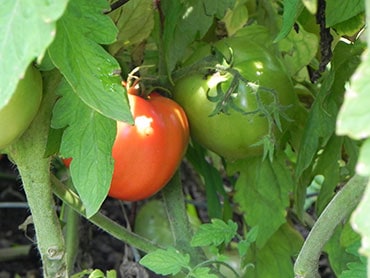Local Eats: The Importance of Healthy Food
“The healthiest food” argued writer Wendell Berry “is the shortest distance from the Earth to your mouth.” In this program, children will learn where their food comes from through interactive and educational activities. They’ll visit our organic garden and solar straw bale greenhouse. Students will harvest fresh herbs and they’ll make a healthy snack using our solar oven. Subjects such as the benefits of active lifestyle and healthy eating will be emphasized so that students will gain a new appreciation for healthy local food and make more informed choices the next time they are choosing their meals.
Curriculum Links
- C1. Understanding Health Concepts Healthy Eating
- C1.1 demonstrate an understanding of how the origins of food (e.g., where the food is grown…) affect its nutritional value and environmental impact … Teacher prompt: “… What is the environmental impact of processed foods?” Student: “… The way processed foods are made and the way they have to be shipped can make air pollution and other environmental problems worse. Manufacturing them can also make water pollution worse, and the packaging they come in creates extra garbage.” Substance Use, Addictions, and Related Behaviours
- C1.2 demonstrate an understanding of different types of legal and illegal substance abuse … and the impacts of abusing these substances on themselves and others (e.g., … environmental issues)
- Human Development and Sexual Health C1.4 identify factors (e.g., … environment, …) that affect physical development … and/or emotional development
- C3. Making Connections for Healthy Living Healthy Eating
- C3.1 explain how local fresh foods and foods from different cultures … can be used to expand their range of healthy choices
Post Camp Kawartha visit
How am I feeling?
What are your favourite foods? How do we know when we are full? Hungry? How can we listen to our body? What are good things to refuel the body with? If we were going on a walk in the woods, what would be something good to bring in case we get hungry?
“Rotate your senses” (Described in the book, Vitamin N by Richard Louv)
- Take your students outside and have them play with their senses. Ask them to try and vary the focus of the senses. And try not to fixate on anything for long.
- This would be a fun “minds on” inside or outside.
Grow food from Kitchen Scraps
- There are many great pieces of advice when it comes to growing from kitchen scraps.
- Maybe the day after you present this idea, children can “rescue” veggie scraps from their compost(s) at home or school
- This could also be an experiment (put some plants right next to the window, others in the shade, others outside (no matter the season). Explore with your students the different growing processes!
- This is a good place to start (https://www.ruralsprout.com/regrow-vegetables/)
Be! Connect to the earth’s energy. Sit, stand, lay or walk on grass, sand, dirt or plain concrete – all barefoot. (as described here: https://eadn-wc04-796033.nxedge.io/wp-content/uploads/FTiN_4waysnature_infographic_23-2-6.pdf)
Herbalicious Poetry Activity (as described by Youth in Food Systems)
https://seeds.ca/schoolfoodgardens/wp-content/uploads/2018/03/Grade-3-6-Herbalicious-Poetry.pdf
Waste in our food systems Activities (as described by Youth in Food Systems)
https://seeds.ca/schoolfoodgardens/wp-content/uploads/2018/03/Grade-3-8-Waste-In-Our-Food-System.pdf
Eat a Rainbow Activities (as described by Youth in Food Systems)
https://kidsgardening.wpengine.com/wp-content/uploads/2016/03/KG_LessonPlans-eatarainbow.pdf
Eat a Rainbow! “By creating a class rainbow representing what students eat in the course of a day, students identify whether they can improve the variety of fruits and vegetables they choose.”
https://www.scienceworld.ca/resource/eat-rainbow/
Eat Outside! Take your class to eat their lunch/snack outside. Does the food taste better? 🙂

